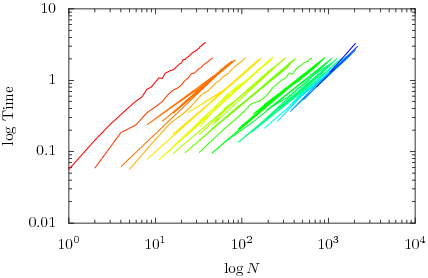Plugins for web applications seems to be discussed a lot more recently by bloggers (Zef did for instance).
Plugins usualy come in 2 shapes: hacks and modules.
The key difference between a hack and a module is that a hack changes existing behaviour and a module adds behaviour or maybe extends some. In Zef`s example he is talking about possibly adding a calander to google`s gmail – that is definitely a module.
When changing the whole interface by for instance being able to plan appointments inside other module`s (like viewing email) that would require changing those modules and basicly make it a hack.
Modules are easy to make and maintain for they form seperate entitites which don’t often conflict. Most web applications already support module-based plugins like IPB. Some more functionality can be added to modules by letting modules hook onto certain events in the other application, but this has its limits.
Where hacks are also widely used, although these are very hard to maintain and usualy conflict which eachother.
So what is the best way to write a plugin based application?
I was thinking about that when I was working on a computer version of the popular card game Magic. There are already a lot of computer version which let players play the game but the players have to apply the rules themselves.. the computer doesn’t do that for them for there are for every card a lot of exceptions and new rules are added every month. To make such a game plugins would be required.
The way I solved this is by putting everything in the game in modules/plugins. The only thing the game does is saying ‘start’ to all plugins. One plugin responds to that and that may for instance be the UI plugin which shows the main UI form and then sais ‘postgui-start’, where another plugin may respond that extends the UI form for some new features in the game and then calls ‘postseries4gui-start’. A card itself is represented by a big hashtable containing all info of that card dynamicly, including functions. Letting one create-card attack another basicly is just a big dynamicly getting properties and calling functions which all are overloaded for new rules which seems to work pretty fine.
Guess what I used to develop this highly dynamic interaction which eachother?
Python!
Python is the perfect language for plugins.
Now.. why don’t we already got really nice web applications allowing this kind of highly dynamic plugins? Web applications are although using sessions, primarily stateless.. On every page view the whole script is loaded in the memory, and executed again and then unloaded. Nothing keeps persistant. Using plugins generates a lot of overhead on espacially loading stuff for every plugin must be able to hook onto and interact with everything. Doing this with the current model webservers just don’t work.
I already made some suggestions how to solve this at the server side, but changing this would take a lot of time.
So to get back to how to get this done -now- and not later is to keep working with a modulair way exposing the most used hooks and data access.
A suggestion for gmail:
Allow SOAP based access to gmail`s features. Exactly the same amount as access as the user has got.
Then allow adding new menu items and hooks on which a call is made to your specified url, which then can work with gmail on the client-access level using SOAP calls.
Best would be for google to just expose the api of gmail and give a limited functionality dev download so people can make modules in the source and send them to google back. If they like it they’ll use it.. I guess google will come up with something like that once. Or at least I hope it.


